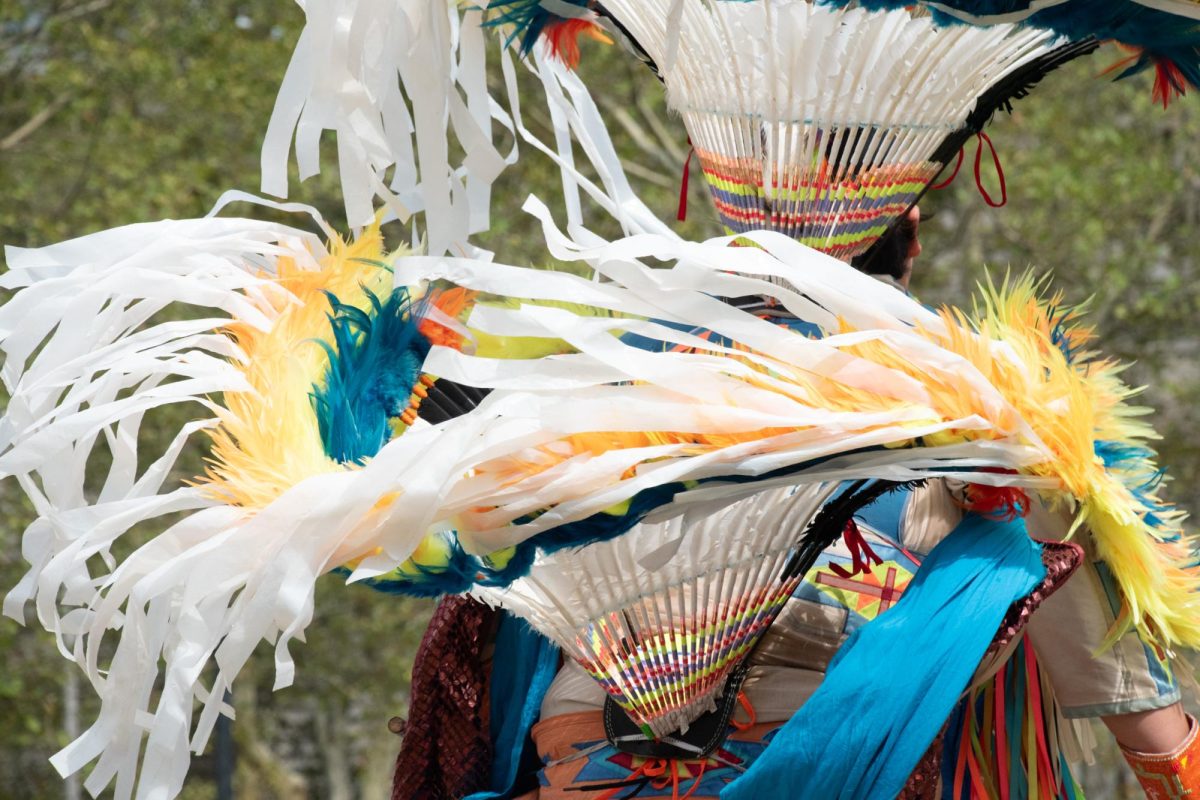Throughout Pittsburgh’s plentiful history of steel mills, bridges and factories, one piece of history that is often overlooked is the city’s Native Americans origins.
According to Michael Sague, Oakland’s Native American history dates back to 19,000 years ago, when Native people first arrived on Pittsburgh’s land.
“There were three significant groups in the Pittsburgh area — the Shawnee, Lenape and the Seneca,” Sague, board director of the Council of Three Rivers American Indian Center, said. “Groups would often migrate to other areas, so even though a tribe may live in Lawrenceville, they would still come to the Oakland area.”
Additionally, across eastern North America, Native tribes were able to build burial mounds that James Hill, a history professor at Pitt, said were incorrectly attributed to non-Native people.
“Under racist assumptions, they believe that there was some other society that must have come, built those mountains and then gone extinct, because they could not square their impression of Native peoples with the engineering feats of a man that built those mountains,” Hill said.
Once European settlers arrived in the Pittsburgh area, the construction of Fort Duquesne marked a turning point when Europeans people began taking over the land.
“The minute Europeans start building permanent institutions here, suddenly that dynamic changed,” Hill said.
Hill mentioned the tactics European settlers used to attempt to remove Native populations from their land, including using blankets to spread smallpox to the populations that had no immunity to the illness, and the influence of the American revolution, another “dark point” in Native American history.
“There is evidence that proves they thought it was a good idea, which is pretty damning,” Hill said. “The American Revolution really marks the beginning of this era being a loss to Native people.”
After tribes were pushed out of the Pittsburgh region, many began to settle in reservations in areas like Oklahoma.
“Other Indigenous groups began moving into western Pennsylvania and were looking to build a cohesive relationship with each other,” Sague said.
The Indigenous groups first created a social group, which eventually turned into the Council of Three Rivers American Indian Center. The Center still has a close relationship with the Oakland community and hosts a mini powwow every year at Schenley Park, where participants are able to buy items at booths, dance and eat food.
Additionally, the powwow provides Pitt students with an opportunity to learn more about Native American culture, something Sague believes is the most important way to preserve that history.
Samantha Chan, assistant director of sustainability in the Office of Sustainability, planned the Indigenous festival, which took place last month, in conjunction with her sustainability plans for Pitt.
“Many Indigenous people view the earth as being borrowed from future generations, a mindset that encourages sustainable behaviors,” Chan said.
The Global Hub featured a display during the week of the powwow with a slideshow showcasing local Indigenous history, quotes from Indigenous leaders, powwow etiquette and the Three Sisters Planting method.
In the display cases were traditional regalia pieces, including a jingle dress and signs that attendees could scan to go toa curated Indigenous music playlist and reading list. The Center for Creativity also hosted multiple workshops with Indigenous community members throughout the week on how to make Native leather pouches and dreamcatchers, and held a drum lecture.
In addition to attending Indigenous culture events, Pitt students are able to learn more about Indigenous history by visiting Hillman Library including a spotlight book collection on Indigenous authors.
“The library is committed to amplifying underrepresented voices and diverse perspectives, including those of Indigenous cultures,” Pitt librarian Jeff Wisniewski said. “The library recently co-sponsored a book talk hosted by OEDI, ULS and ICF [and] Indigenous author Michelle Jacob.”
Although Pitt offers some culture events and library resources, Hill believes Pitt has not gone out of their way to help support Indigenous students.
“There is not a Native American student organization here and there is a lack of Native students in general,” Hill said. “We don’t really have an American studies department. It seems like a blind spot at the University.”
Going forward, Hill hopes to see Pitt better meet the needs of Native students.
“There’s no recognition of the Native community even though they still exist in Western PA,” Hill said. “I would like to see some kind of acknowledgement.”



